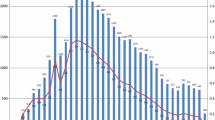Abstract
The Federal Highway Administration developed a state-level version of its Highway Economic Requirements System (HERS-ST) model to help states plan and manage their highway systems. Unlike frameworks that consider engineering sufficiency criteria only, the HERS-ST model also allows economic evaluation based on benefit-cost analysis. This study employs the model to address two questions about the level and allocation of investment spending on Texas highways: (1) Does the level of spending fall short of what is economically warranted and, if so, by how much? (2) Could a reallocation of spending between urban and rural areas, and among the highway functional classes produce substantial benefits? The results suggest that Texas is indeed under-investing in highway by a substantial amount. TxDOT expenditure on highway investments within the scope of HERS-ST averaged $2.7 billion per year during the 5 years starting FY 2000, and continuation of recent trends would bring the annual average for the 20 years starting in that year to about $3.4 billion. Relative to this 20 -year projected level of spending, our estimates from HERS-ST indicate that a near doubling would be economically warranted. The results also indicate that reallocation of investment spending, relative to the recent historical pattern, would produce substantial benefits. These gains are estimated at over $5.6 billion per year from reallocating funds from rural to urban areas, and over $1.0 billion per year from reallocating urban and rural funding among highway classes. The estimates are only broad indications, however, and numerous caveats apply.
Similar content being viewed by others
References
Anderson JH Jr, Siggerud K (2000) Highway infrastructure: FHWA’s model for estimating highway needs is generally reasonable, despite limitations. Report GAO/RCED-00-133, US General Accounting Office
Bureau of Labor Statistics (series) Occupational employment statistics. http://www.bls.gov/OES/
Cambridge Systematics, Inc. in association with Glaze Associates, Inc. (2003) Macroeconomic impacts of the Florida Department of Transportation Work Program. Report prepared for the Florida Department of Transportation
Commissioner Ric Williamson (Chairman, Texas Transportation Commission, Texas Department of Transportation) Testimony Before the Study Commission on Transportation Financing, 19 April 2006
Federal Highway Administration (series) Highway Statistics. http://www.fhwa.dot.gov/policy/ohpi/hss/index.htm
Federal Highway Administration (series) Price Trends for Federal-Aid Highway Construction. http://www.fhwa.dot.gov/programadmin/pricetrends.htm. Accessed April 2007
Federal Highway Administration (2000) Highway Economics Requirements System – Technical Report, Version 3.26, US Department of Transportation
Federal Highway Administration (2005) Highway Economics Requirements System – State Version Technical Report, US Department of Transportation. http://www.fhwa.dot.gov/infrastructure/asstmgmt/hersindex.htm
Federal Highway Administration (2006) Overview of Highway Performance Monitoring System (HPMS) for FHWA Field Offices, US Department of Transportation. http://www.fhwa.dot.gov/policy/ohpi/hpms/
Governor’s Business Council (2006) Shaping the competitive advantage of Texas Metropolitan regions: the role of transportation, housing, and aesthetics. http://www.texasgbc.org/Reports3.htm
Greater Austin Chamber of Commerce (2004) Business Climate Assessment
ICF Consulting, HLB Decision Economics and Louis Berger Group (2001) Freight Benefit Cost Study. Federal Highway Administration. Office of Freight Management and Operations. Final Report
Indiana Department of Transportation (2003) The INDOT Twenty-Five Year Plan as Amended November 2003. Division of Environment, Planning and Engineering
Luskin D (1999) Facts and Furphies in benefit–cost analysis: Transport. Bureau of Transport Economics, Canberra. http://www.btre.gov.au/docs/reports/r100/r100.aspx
National Cooperative Highway Research Program (2007) Research in progress: models for estimating the effects of pavement condition on vehicle operating costs. Research Project 1–45, Transportation Research Board. http://rip.trb.org/browse/dproject.asp?n=11043. Accessed April 2007
Ohio Department of Transportation (2002) Freight impacts on Ohio’s Roadways. Office of Urban and Corridor Planning
Oregon Department of Transportation (1999) Oregon Highway Plan. Transportation Development
Regional Economic Models, Inc. Expanding US Highway 54 in New Mexico. Report prepared for Souder, Miller, & Associates, 2004
Schrank D, Lomax T (2005) The 2005 Urban Mobility Report. http://tti.tamu.edu/documents/mobility_report_2005_wappx.pdf
Scheinberg PF, Siggerud K (2001) Highway infrastructure: FHWA’s model for estimating highway needs has been modified for state planning. Report GAO-01-299. US General Accounting Office
Treyz F, Treyz G (2002) The REMI Economic Geography Forecasting and Policy Analysis Model. Regional Economic Models Inc., Amherst, MA
US Department of Transportation (2007) 2006 status of the nation’s highways, bridges, and transit: conditions & performance: Report to Congress, Federal Highway Administration and Federal Transit Administration. http://www.fhwa.dot.gov/policy/2006cpr/index.htm
US Department of Transportation (2002) Highway economic requirements system state version: Technical Report Version 2.0, Federal Highway Administration
State Auditor’s Office (2007) An audit report on the department of transportation’s reported funding gap and tax gap information. SAO Report 07–031. http://www.sao.state.tx.us/Reports/report.cfm/report/07-031
Texas Department of Transportation (2005) Tomorrow’s Transportation System, Strategic Plan 2005–2009. ftp://ftp.dot.state.tx.us/pub/txdot-info/lao/strategic_plan2005.pdf
Transportation Research Board (Committee for the Study of the Long-Term Viability of Fuel Taxes for Transportation Finance) (2006) The fuel tax and alternatives for transportation funding. Special Report 285
University of California (Irvine) and HLB Decision Economics Inc. (1999) Valuation of travel-time savings and predictability in congested conditions for highway user-cost estimation. NCHRP Report 431
Washington State Department of Transportation (2001) Benefits of rail freight study
Author information
Authors and Affiliations
Corresponding author
Rights and permissions
About this article
Cite this article
Luskin, D.M., Mallard, E.E. & Victoria-Jaramillo, I.C. Potential gains from more efficient spending on Texas highways. Ann Reg Sci 42, 565–590 (2008). https://doi.org/10.1007/s00168-007-0182-y
Received:
Accepted:
Published:
Issue Date:
DOI: https://doi.org/10.1007/s00168-007-0182-y




